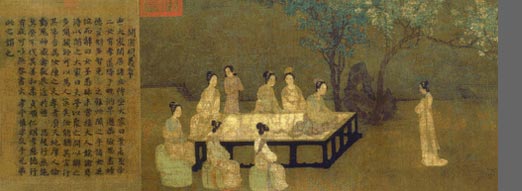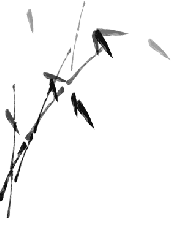| | |
General information of jade
Overview of Xiu jade(Xiuyan Jade)
Distinguish quality jade from fake or inferior jade
Jade's grading system in common language
Jade has a history in China of at least four thousands years. Unknown to some, jade is found contained within the development of religion and civilization, having moved from the use of decoration on to the others such as the rites of worship and burial. Although other materials like gold, silver and bronze were also used, none of these have ever exceeded the spiritual position that jade has acquired in peoples' minds - it is associated with merit, morality, grace and dignity. In the funeral objects of the people of the Western Han Dynasty (206 BC - 24 AD), for example, we can see only high officials were buried with jade articles.
Jade has influenced all walks of life. In ancient times, people expressed abstract notions with concrete patterns of Chinese character, which were influenced by Taoism and Buddhism. Jade craftworks were among the most precious and luxurious ones; people wore and decorated rooms to indicate loyalty, elegance, beauty, and eternity. The most popular patterns were: peach (longevity), mandarin duck (love), deer (high official ranks), bat (blessing), fish (affluence), double phoenixes (thriving), bottle (safety), lotus (holiness), bamboo (lofty conduct), and fan (benevolence), etc.
In Chinese, jade is pronounced as 'Yu', and most words related to moral include this word such as 'Unpolished jade never shines,' indicating that one cannot be a useful person if he is not educated. Jade also implied honor and conviction. Many girls in ancient times were also named with jade to reflect the love of their parents. One of the Four Beauties in Chinese history, Yang Yuhuan, the beloved concubine of Emperor Xuanzong in the Tang Dynasty (618 - 907), was their representative. Yang is her surname and her given name Yuhuan means simply 'jade ring'.
People believed that jade was the expression of the most beautiful stone. A beautiful piece can be more valuable than fifteen cities and a man's life. Historic records tell of a story about a stanch man named Bian He who had a piece of jade called 'Heshi Bi' which was said to be the most priceless treasure in history. However, when Bian He discovered the piece, it was hidden under the veil of the coarse stone in which it laid. He did not dare to carve it but instead dedicated it to the King of State Chu. He never knew that he would pay two legs for his dedication, for the king did not know the real value of the jade and cut Bian He's legs off. He cried for three days and nights. Afterwards, the new king heard of him and wanted to see whether his jade was as precious as he said. When the jade was cut, all were startled by the delicate quality. Very soon, it became a national treasure and was called 'Heshi Bi'. So precious was the stone that it even became a source of conflict between the Qin State and Zhao State. According to archeologists and archeological findings, Chinese first began to know and use jade in the early Neolithic Age. Many jade artifacts, some dating back 4,000 to 6,000 years, have been excavated from a number of places. The jade had been used for many purposes, not only decorative. Up until the Shang and Zhou dynasties, jade was fashioned into tools, weapons, daily utensils, accessories and ritual utensils. As commodity exchange expanded, jade also became used as currency. For thousands of years up to the present day, jade has been a symbol of love and virtue, as well as a symbol of status.
In the Zhou Dynasty, the use of jade was first regulated in Zhouli, or the Rites of the Zhou, which was the 'constitution' of the Zhou Dynasty, and addressed matters such as politics, economics, military affairs, diplomacy and law. Together with two other classic texts, the Yili (or Rites) and subsequently, Liji (Book of Rites), national rites and etiquette and guiding philosophy were strictly stipulated. In the Zhouli alone, there were dozens of articles concerned with the use and function of jade during different occasions such as politics, sacrifices, alliances, and military activities, etc. According to the three classics, a special ministry should be set up to manage jade use. It was stipulated that six jade ritual items should be made in order to offer sacrifice to heaven, the earth, the east, the south, the west and the north. There were also strict regulations concerning the six jade tablets that were used by emperors, dukes, marquises, earls, viscounts and barons, respectively. According to the functions listed in the three classics, Jade ware could be divided into the following categories - ritual utensils, funerary utensils, accessories, currency, weapons, diplomatic gifts, musical instruments and food. Simple carving, careful handling and keeping separate private and public ritual vessels, were some of the basic rules to follow in the use of jade.
Because the ancient Chinese believed that jade was the essence of Heaven and the Earth, they carved jade into birds and beasts to use as items of worship. In witchcraft, jade began to be applied as a percussion instrument, since it made a sound pleasing to the ear, and the noise traveled far. After the adoption of musical scales, jade became used for musical instruments. The ancients apparently associated jade with heroes who made great contributions to China, including, Emperor Yan, the 'God of Farming', and Emperor Huang who first united China.
Jade was also a symbol of power. In ancient times, only aristocrats could own items of jade. The imperial seal of the Qin Dynasty, the first feudal society in China, was made of jade. This seal was later sought by feudal lords in order to prove they were the true 'Heavenly Sons'.
Furthermore, more noble attributes were given to jade, making it a standard of morality. Confucius concluded that jade had 11 virtues, including benevolence, fidelity, polite etiquette, wisdom and sincerity. Hence, jade was not only a decoration, but also a symbol of ethics and customary behaviour. People then adopted the fashion of wearing jade accessories. It was said that a gentleman would never leave his jade ornaments.
Jade was believed capable of representing Heaven, the Earth, the east, the west, the south and the north and emperors. It was considered to function as a messenger between Heaven and mankind. In the ancient times, 'yu', the Chinese character meaning jade, was the same as 'wang' or king. The three horizontal strokes stringed by a central vertical stroke represented Heaven, the Earth and mankind respectively. Hence 'yu', is always used in Chinese to call something precious, and jade has always been treasured in China as the royal gemstone.
Chinese people also believed that jade had supernatural power. Using jade wares and jade ornaments could resist the intrusion of evil influences and avoid evil apparitions, thus securing safety and auspiciousness.
Although it sounds strange, some people, mostly Taoists, believed that jade was edible, and could keep one physically immortal.
Precious stones such as jade played a significant role in the development and spread of religions in China. Since the beliefs the ancients bestowed on jade are, in many respects in accordance with religious beliefs, jade is closely associated with religion. In Buddhism, the 'Pure Land' is composed of gold, silver, agate, coral, amber and gray jade. Thus, Chinese Buddhism emphasizes the collection and use of various precious stones. In the Famen Temple in Shaanxi province, near Xian, of the four Buddhist Relics discovered, one had been placed in a custom-made jade coffin. The Buddhas and Buddhist musical instruments in the Potala Palace and the Ta'er Lamasery are mostly decorated with lazuli, turquoise, agate, gray jade and white jade. Up until the Tang Dynasty, Buddhism reached its peak, and there was an upsurge in the use of jade carvings concerned with Buddhism, such as Amitabha, Kwan-yin, prayer beads. These were used as amulets to protect people from disease and evil, and act as 'agents' to carry the wearers' emotions, expectations and beliefs to Buddha. Jade has similar functions in Taoism.
Jadeite
As early as the 16th century, Jadeite was believed to be a precious and hard jade with healing qualities for the human stomach and kidneys. Since it was brought into China during the early Qing Dynasty (1644 - 1911), it had been doted on greatly. Jadeite contains an iron component which appears red, chromium that appears green, and many other colored types. Known as the 'king of jade', it is usually a more expensive type of jade.
Nephrite Jade
Nephrite's robustness is due to the fact it contains tremolite. It also can be divided into several sub-classifications according to color: white, grey, green, topaz, and black jade.
In China, the most reputable jade producing area is Hetian in Xinjiang Province. Hetian jade is so hard that it can scratch glass. It has often been found in very huge pieces. An example of this is the huge jade hill on which the grand scene of Yu the Great leading people to control flood is elaborately carved. It was 5,350 kg weight (11,795 pounds) when it was completed. Now this artwork is displayed in the Forbidden City.
Serpentine jade, or Xiu yu in Chinese, is mainly from Xiuyan County in Liaoning Province. Made of many different ingredients, it takes on various appearances: white, yellow, light yellow, pink, green, dark green, light green and so on. This type of jade is usually coloured in various shades of green. Usually serpentine jade is semi-transparent or even opaque like wax.
Lantian jade is produced in Lantian County, north of Xian in Shaanxi Province. It was also among the most charming ancient jades, for its rigidity made it easier to be carved into decorations and jewelry by our ancestors. The hue is uneven in colors of yellow or light green.
Nanyang County in Henan Province is famous for its abundant Nanyang jade. The ore district is located on an isolated 200 meter high hill, called Dushan Hill (thus its other name of 'Dushan jade'). It is distinctive for its whimsicality. Among the Nanyang jade artworks, you will find rare purple, blue and red ones.
>> View More Chinese Jade
Referrence site: http://www.travelchinaguide.com/intro/arts/jade.htm
|

